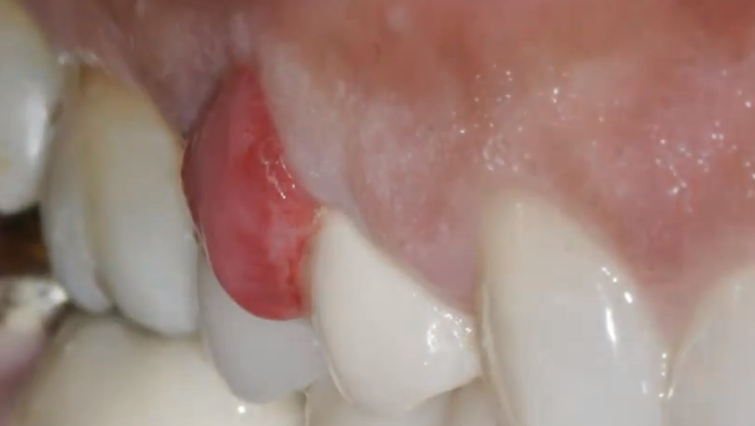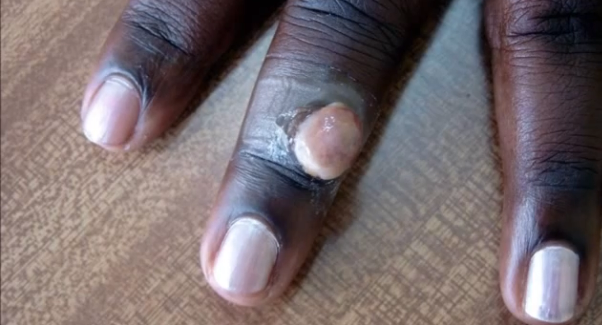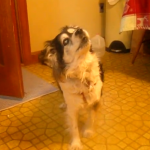Pyogenic granuloma is a skin infection that causes growth of uneven red colored bumps. These bumps look like raspberry, or a raw meat cut into pieces. It is not a very serious condition; however at times it can lead to uneasiness and excess bleeding. Pyogenic granuloma is also termed as ‘Granuloma Telangiectaticum.’
Pyogenic granuloma is usually deemed as an oral abnormality which develops when a tissue overgrows because of hormonal changes,irritability or physical trauma. This in turn affects the skin and nasal passage and sometimes other parts of the body like thigh.
In the year 1987, pyogenic granuloma was discovered by two surgeons named Dor and Poncet from France. When they discovered they called it as ‘botryomycosis hominis.’ If the term ‘pyogenic granuloma’ is studied, it can be seen that it is not an appropriate term since the disease is not an original type of granuloma. Bleeding occurs due to a capillary hemangioma which belongs to lobular subtype. Further it is not pyogenic because the true types are usually not infectious and painful.
Symptoms of pyogenic granuloma
Some of the symptoms of pyogenic granuloma include:
- The colors of lesions that are formed because of pyogenic granuloma keep on varying. Sometimes they are pink, and sometimes red or purple. Newly formed lesions are usually red-colored; this is due to excess presence of blood vessels in the lesions. Later, theolder lesions become pinkish.
- The lesion grows very fast and may bleed with minimal or no injury. If the lesions are formed in areas that are open to disturbance then it may cause pain; else it is painful for some time only. These lesions are usually smooth.
- The size of lesion also varies. It can be of two mm to two cm in diameter. However, at times it can also grow up to five cm.
- Women are more prone to pyogenic granuloma than men, and it also mostly affects youth and children.Expectant women generally experience these lesions in the 1st month and it increases gradually till the seventh month. It usually affects the front area of the nasal septum causing constant bleeding from nose.
- Pyogenic granuloma affects the gingival; and further it leads to 2 other gingival conditions. These are peripheral giant cell granuloma and peripheral ossifying fibroma.
- Stress or poor oral hygiene are generally the reasons for such lesions. Lesions may form on other parts like lips, tongue and interior of cheek.
- The surface of lesions mayalso contain ulcers, or it can lead to inflammation as well.
- In exceptional cases, minor trauma can cause lesions in the cornea, connective tissue or conjunctiva of the eye. These lesions look same as the lesions formed at the other areas of the body.
Causes
The exact cause of pyogenic granuloma has not been discovered till date. Still there are few risk factors that increase the chances of being infected by pyogenic granuloma. Some of the risk factors are:
- Staphylococccus aureus infection:This bacterial infection is amongst the main causes for pyogenic granuloma lesions.
- Injuries: Few examples such as prick by a pin or needle causing trauma.
- Viral infections: These can also be a cause for pyogenic granuloma lesions but has not been proven till now.
- Sometimes abnormal or malformations of blood vessels can cause formation of pyogenic granuloma lesions in that particular part of the body.
- Hormone influences:In rare cases it is due to oral contraceptives, and around 5 per cent of the pregnant women are affected.
- Drugs:Intake of medications such as systemic retinoids or protease inhibitors can also sometimes form the characteristic lesions.
Pyogenic Granuloma Treatment
In case of pregnant women the lesions usually disappear on their own after the delivery of the baby. Therefore,in these cases, it is better to wait than opt for treatment.
When lesions occur due to drugs then the person suffering from pyogenic granuloma can stop taking the particular drug causing lesions.
Apart from the above two cases, the rest of the cases of pyogenic granuloma can be treated as follows:
- In children, a method called imiquimod can be opted to treat the lesions. These are very effective in kids.
- Laser therapy can also be used to do away the lesions and burn it beneath the skin. To contract small lesions a pulse dye laser is a good option.
- Another useful method to treat pyogenic granuloma is cryosurgery. In this method, the lesions are frozen with liquid nitrogen which destroys them.
- Curettage and cauterization process is also a good treatment option. In this process, the abnormal skin is scrapped off with a pointed instrument known as a ‘curette.’ Then the blood vessels that boost the lesions are cauterized to lessen the chances of redevelopment.
- The chances of redevelopment of pyogenic granuloma lesions persist because of the deep presence of the blood vessels that feed the lesions. Therefore the best treatment is surgical removal of the affected area. The part is cut out, sutured, and then bandaged.
Pyogenic Granuloma Pictures





